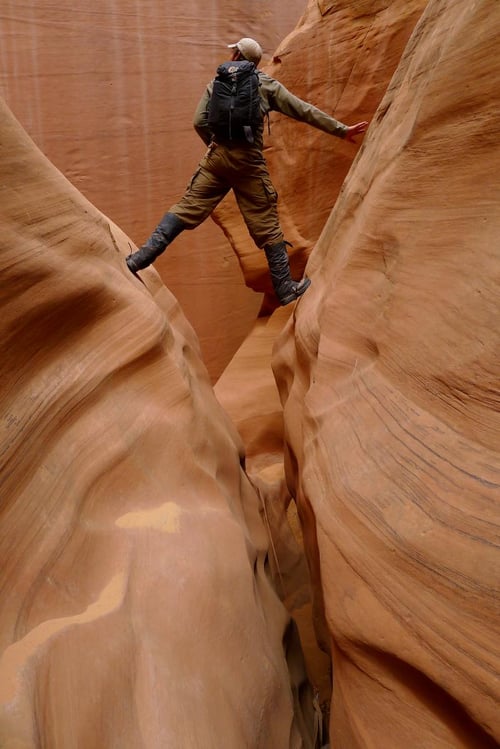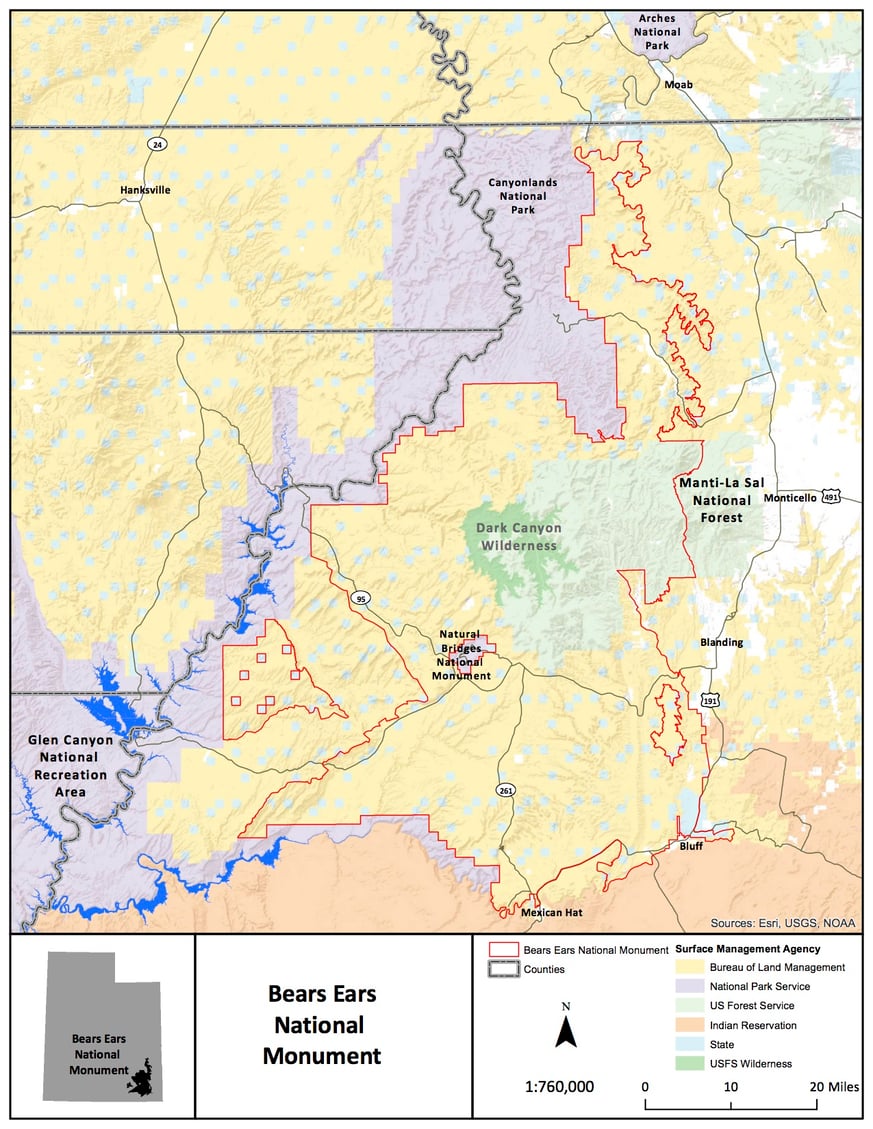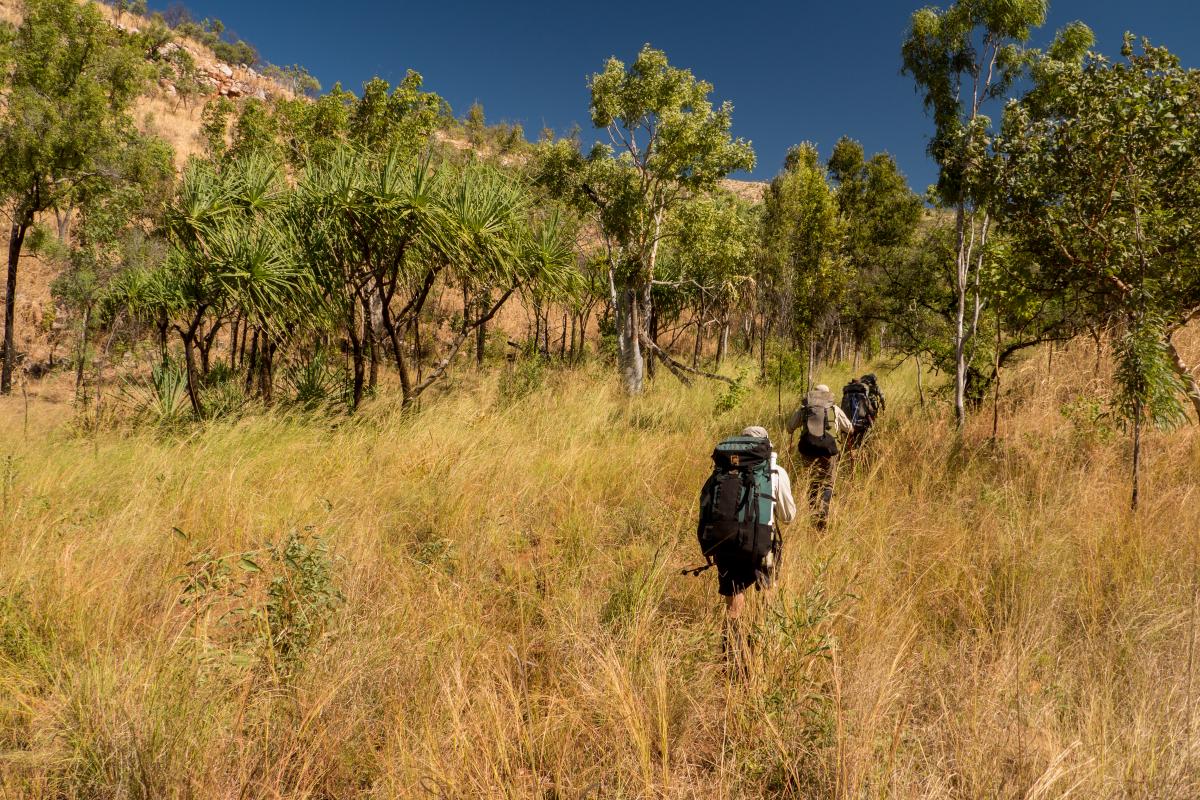
The canyonlands of southeastern Utah are a haunting, hallowed place. So still you can hear the wind under the wings of a raven passing overhead. So alive that slickrock waterfalls spring to life at the hint of rain. So deep that to walk the length of a canyon is to travel backward in time, a thousand years with each step.
The Obama Administration on December 29, 2016, in one of its final acts of environmental policy, announced the creation of Bears Ears National Monument, a 1.35-million-acre tract of land in southeastern Utah. The new monument encompasses several NOLS wilderness classrooms, where fall and spring Semester in the Rockies students spend several weeks hiking, rappelling, and traveling independently.
While the conservation of federal lands is—forever and always—a contentious issue in the Southwest, this decision will protect the area around the Bears Ears Buttes from oil, gas, and mineral development while leaving it open to recreation, exploration, archaeology, and preservation.

Unlike Yosemite or Yellowstone, Utah’s Cedar Mesa canyons hold little place in the public imagination. Here, you’re just a stone’s throw from Moab and Glen Canyon, but with none of the noxious Jeeps or gawking tourists and their selfie sticks. The landscape is barren enough to keep all but the adventurous and truly foolish away.
This is the stomping ground of Ed Abbey and Terry Tempest Williams, where the rusting wreckage of old mining claims—first gold, later uranium—dot the landscape. Where Mormon ranchers once tried to bend water to their will with irrigation ditches and tame the landscape into something less forbidden, more pastoral. Butch Cassidy and his Wild Bunch took refuge here, stashing their loot in high grottos and camping in bone-dry arroyos; no lawmen dared follow them into their canyon hideouts, and if they did, they didn’t ride out.
Long before them, of course, were the Clovis, and later the ancestral Puebloans, indigenous forebears of today’s Hopi, Ute, Zuni, and Navajo tribes. Their stone dwellings, kivas, towers, and granaries still stand, perched high on seemingly unscalable walls. The rock art, pottery shards, and spear points they left behind look to have been placed there only yesterday. As empty as this landscape appears, it is hardly unexplored, unknown. To scout a shortcut around a meander in Dark Canyon is to follow a path that humans have walked for more than a thousand years.
At sunrise, the sandstone walls glow the color of ochre, mustard, mud, and blood; spires and arches throw shadows long and blue. Up on the mesa, the heat of the coming day is unforgiving; only the cold-blooded move, basking on rocks and drinking in the warmth.
Kill or be killed: coyotes and jackrabbits sleep by day and hunt—or run—by night; a juniper gone too long without rain will strangle one of its own limbs to save another. But descend a steep set of moki steps—smooth depressions in the rock carved long ago by indigenous dwellers—and enter a different world. In the canyon bottom, a spring burbles up from some secret place in the rock. Massive cottonwoods, their brilliant yellow leaves trembling at every breath of wind, thrust their roots deep into the damp soil. Follow the deer and elk tracks; they know where the pools persist.
Water is life in this place, but also death. Flash floods rip through slot canyons like unbraked freight trains—geology in action, scraping a layer of sand here, depositing it there. Left behind in the turgid mud: twisted grass and shattered thistle, a bowling ball of petrified wood, a dismembered purple sleeping bag, its insulation spilled out in the sand. Where is its owner now?
To adventure into the mountains is to scramble up the highest peaks in search of the best views. To slither down into the canyons is just the opposite—it’s to pick your way into the bowels of the earth, seeking the tightest squeeze and narrowest slot, where shadow reigns and ice persists till April. It is the extremes of the canyons—the merciless sun and impossible cold, the parched earth and hidden sweetwater pools—that make it such an excellent classroom. Adversity and uncertainty aren’t just possible; they’re assured.
A technical slot canyon, once committed to, offers no escape; pull your first rope and your only way out is down. A pocket that held water last year might now be filled with nothing but sand. It’s not uncommon to spend all afternoon hiking up an unnamed side canyon, only to find your exit blocked by a hundred-foot pour-off. One never gets so much practice at turning around as in the canyons—nor hunting for water, crawling on hands and knees, rappelling into freezing pools, or generally abandoning all hope and expectation.
At a moment when federal environmental policy is in flux, the creation of Bears Ears National Monument is a victory for lost places and the lonely few who still seek them out. It’s a spark of hope for those with the wild in their bones.
Written By
Kevin Fleming
Kevin Charles Fleming is a field instructor and program supervisor at NOLS Rocky Mountain. He is currently at work on a book about the practice of leadership.




